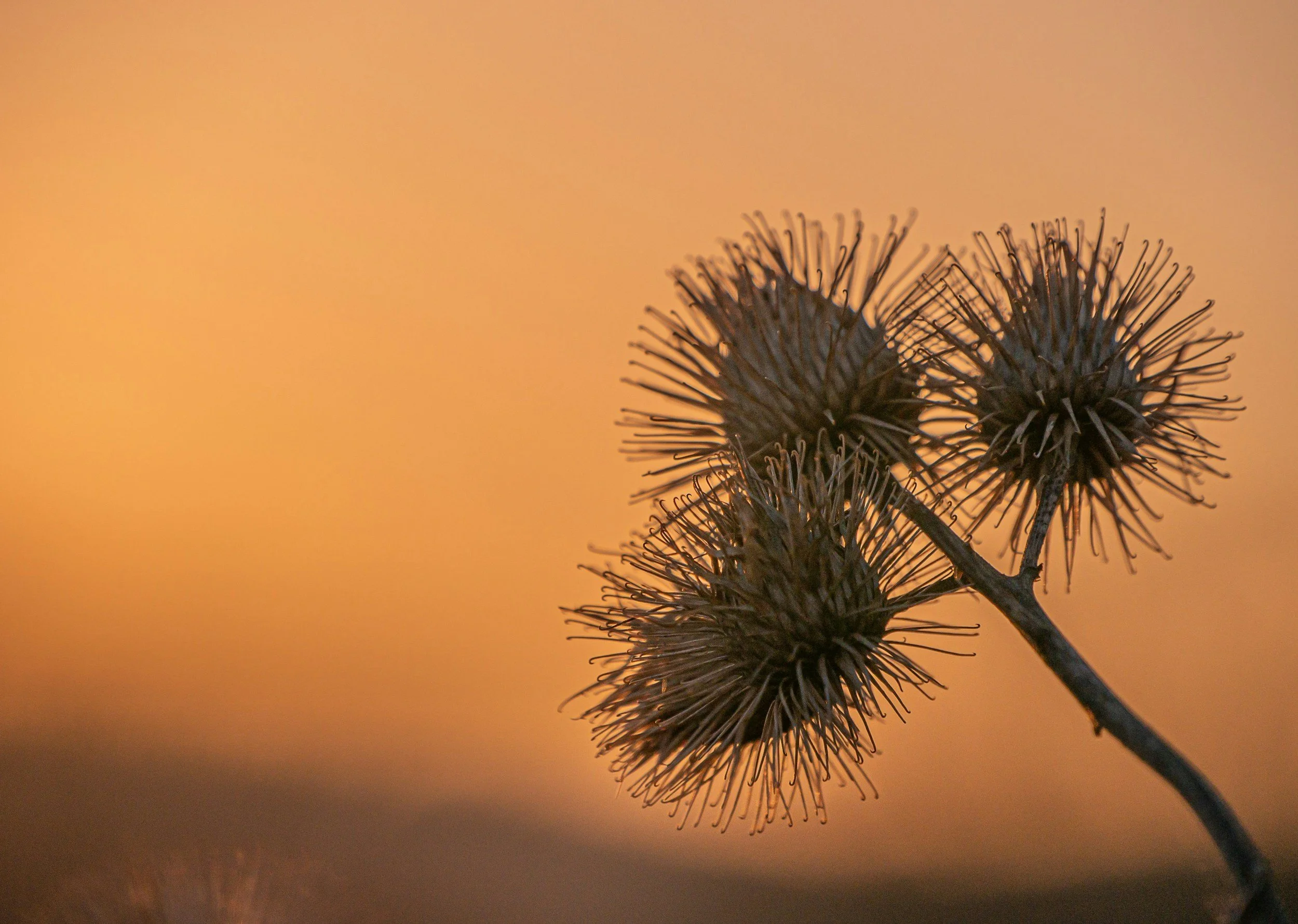
Burdock
Burdock (Arctium lappa)
Burdock (Arctium lappa) is a grounding, earthy herb best known for supporting the skin and detox pathways. Traditionally used to “cleanse the blood,” it works slowly and steadily, helping the body move waste and calm hot, irritated skin from within. A brilliant ally in long-term, constitutional formulas.
Plant family
Asteraceae
Parts used
Root (radix)
Seed (semen)
Typical forms of prescription
Tablets
Tinctures
Dosage
Tincture (1:2): 20–25 ml per week (root); Dried herb: 3-6 g per day (root).
Burdock (Arctium lappa) - Clinical Snapshot
Primary Actions
Alterative
Diuretic
Antioxidant
Antimicrobial
Anti-inflammatory
Hepatoprotective
Laxative
Hypoglycaemic
Primary Indications
Skin issues: Acne, eczema, psoriasis, boils
Liver & Detox: Liver support, detoxification
Urinary system: Cystitis, kidney stones
Digestive system: Constipation, indigestion
Blood sugar: Type 2 diabetes, high blood sugar
Antimicrobial use: Chronic skin infections, fungal infections
⚠️ Cautions / Safety ⚠️
Avoid in pregnancy due to potential uterine stimulation
Caution in individuals with an Asteraceae allergy
Arctium lappa
Phytochemistry and Pharmacology
-
Action: Phytoestrogenic, antioxidant, anti-inflammatory, anti-cancer.
Use: Lignans help regulate hormone activity, support liver detoxification, and may have protective effects against certain cancers due to their ability to modulate oestrogen receptors and scavenge free radicals.
-
Action: Prebiotic, mild demulcent, blood sugar regulator.
Use: Inulin is a type of soluble fibre that supports the growth of beneficial gut bacteria, helps regulate blood glucose levels, and gently soothes the digestive tract. It also assists in detoxification through bowel regularity.
-
Action: Bitter tonic, stimulates digestion, liver stimulant.
Use: These activate taste receptors, stimulating bile flow, digestive enzyme secretion, and improving appetite, making Burdock a classic digestive bitter.
-
Action: Antibacterial, antifungal, anti-inflammatory.
Use: These compounds are especially helpful for skin conditions and infections. They are part of what gives Burdock its traditional use in treating chronic skin problems like eczema and acne.
-
Action: Antioxidant, anti-inflammatory, hepatoprotective.
Use: Polyphenols combat oxidative stress, protect liver cells, and help modulate inflammation throughout the body. They're key in supporting chronic inflammatory skin or joint conditions.
-
Action: Astringent, antimicrobial, anti-inflammatory.
Use: Tannins help tone tissues, reduce inflammation, and act as mild antiseptics. In Burdock, they assist in treating leaky gut, wounds, or inflamed skin by tightening tissues and reducing secretions.
Traditional Use
Dandelion and burdock root cordial was used as a spring-renourishing-digestive tonic and is classified as a traditional ‘blood purifier’.
Clinical Description
Arctium species support a poorly functioning liver and kidneys. This makes it a good choice in prescriptions for supporting skin clearance in cases such as acne and eczema (which often occur due to poor waste product removal from the body, e.g. hormones and allergens). It is perfect for deep boils, abscesses and skin infections. The herb also supports good digestion and reduces inflammation of the digestive tract. Its diuretic action helps remove uric crystals and waste build-up in gout and arthritic/inflamed joints. Herbalists mostly use the root. However, the seed can also be used and tends to be prescribed for acute treatment.
Cultivation/Harvesting
Root cuttings are easier to grow Arctium from; an ample space is required. A biannual plant, therefore, has roots harvested in the autumn of the first year or spring of the second year, and seeds are collected from the second-year plants. More straightforward to harvest from a large pot containing sandy soil. Young leaves can be confused with Pyrrolizidine Alkaloids (PA) containing herbs like coltsfoot (Tussilago farfara).
Key Botanical Features of Burdock (Arctium lappa)
Growth
Growth Habit: Biennial herbaceous plant, reaching 1–2 meters (3–6 feet) in height.
Stem: Erect, sturdy, branched, and often reddish or purplish-tinged.
Leaves
Type: Large, alternate, and heart-shaped.
Size: Up to 50 cm (20 inches) long.
Colour: Dark green on top, whitish and slightly woolly underneath.
Texture: Soft and slightly hairy.
Flowers
Type: Thistle-like, spherical flower heads.
Colour: Purplish-pink to violet.
Inflorescence: Found in clusters at the ends of branches.
Blooming Period: Summer (July–September).
Pollination: Insect-pollinated (bees and butterflies).
Fruits & Seeds
Fruit Type: Dry, oblong achene with pappus (tiny bristles).
Seed Dispersal: Burrs covered in hooked bristles attach to animals and clothing (inspiration for Velcro!).
Roots
Type: Thick, fleshy taproot, often reaching 1 meter (3 feet) deep.
Colour: Light brown externally, white inside.
Function: Used medicinally and as food (e.g., in Japanese cuisine as "gobo").
Habitat & Growth Conditions
Climate: Prefers temperate regions.
Soil: Well-drained, fertile, and loamy soil.
Sunlight: Thrives in full sun to partial shade.
Distribution: Found in Europe, Asia, and North America, often in disturbed areas, roadsides, and meadows.
Sustainability/Conservation:
It is common and abundant. Only the seeds should be wildcrafted; due to the legalities of digging up roots, it is better to grow your own or purchase.
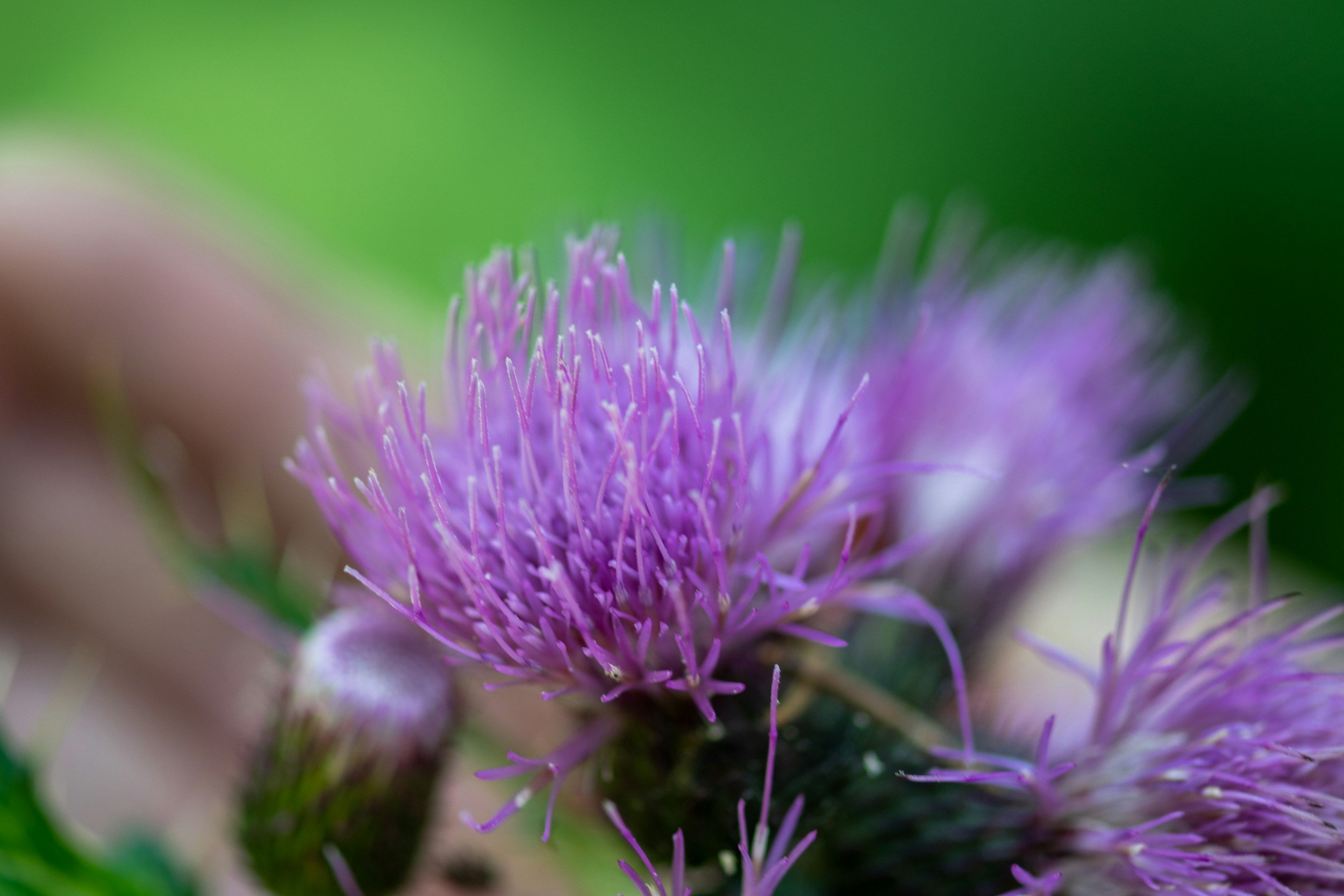
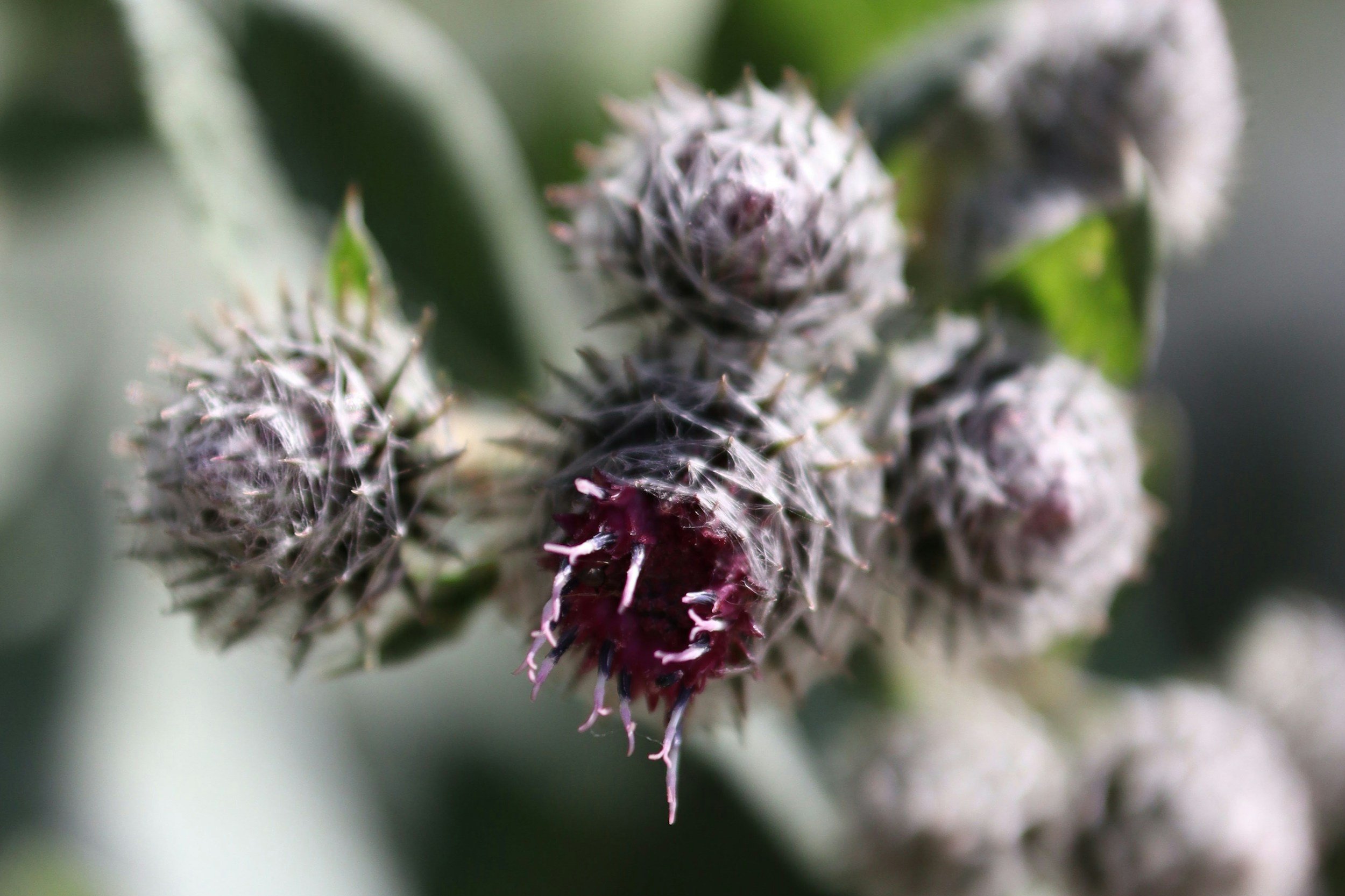
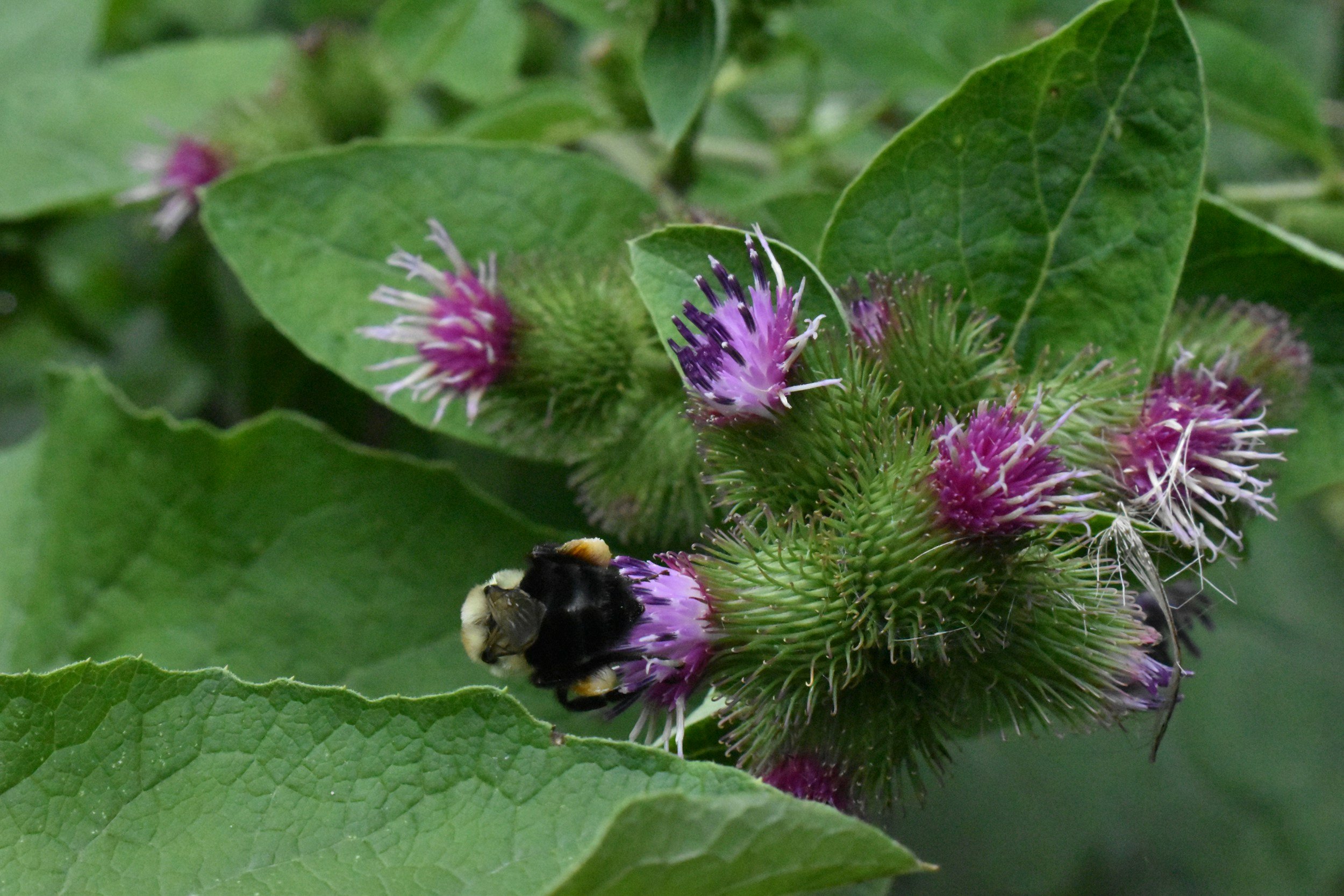
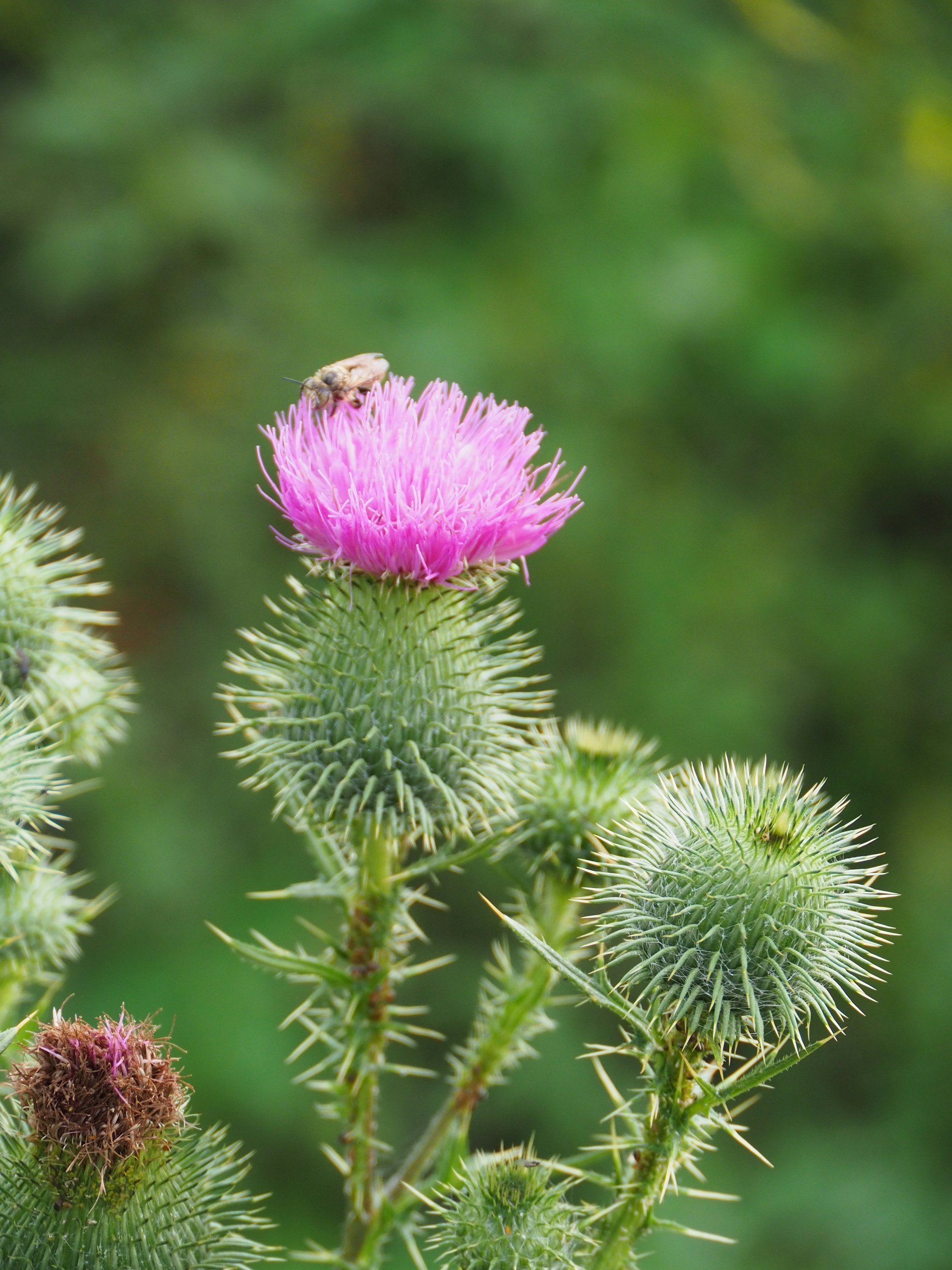
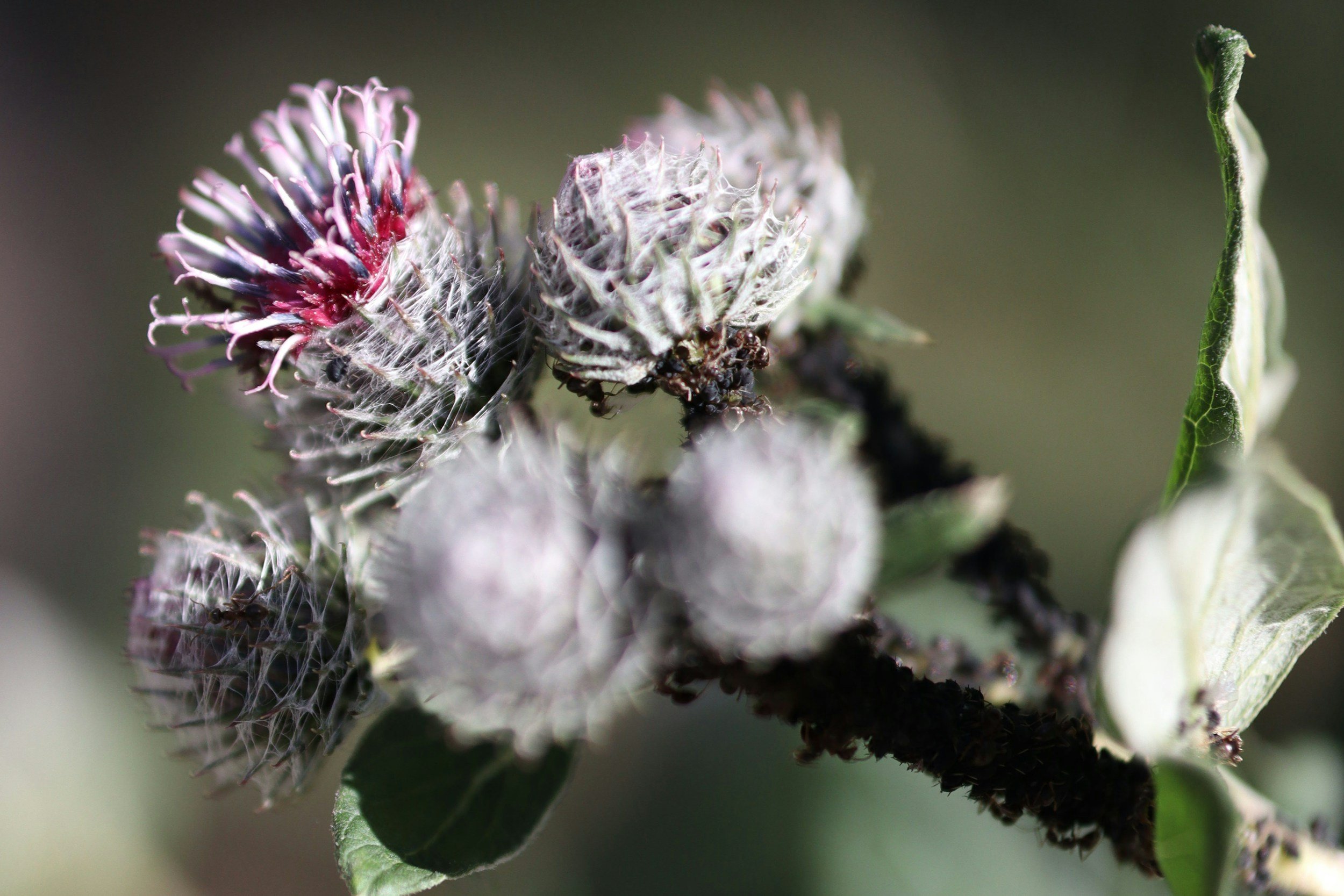
Sources
Bartram, T. (1998). Bartram’s encyclopedia of herbal medicine. Constable.
Fisher, C. (2018). Materia medica of western herbs (Rev. ed.). Aeon Books.
Hedley, C., & Shaw, N. (2020). A herbal book of making and taking. Aeon Books.
Hoffmann, D. (2003). Medical herbalism: The science and practice of herbal medicine. Healing Arts Press.
McIntyre, A. (2019). The complete herbal tutor (Revised & expanded ed.). Aeon Books.
Royal Botanic Gardens, Kew. (n.d.). Plants of the World Online. https://powo.science.kew.org/
Mills, S., & Bone, K. (2013). Principles and practice of phytotherapy: Modern herbal medicine (2nd ed.). Churchill Livingstone; Elsevier.
Barnes, J., Anderson, L. A., & Phillipson, J. D. (2013). Herbal medicines (3rd ed.). Pharmaceutical Press.
Benzie, I. F. F., & Wachtel-Galor, S. (Eds.). (2011). Herbal medicine: Biomolecular and clinical aspects (2nd ed.). CRC Press; Taylor & Francis.
Evans, W. C. (2009). Trease and Evans’ pharmacognosy (16th ed.). Elsevier.
Disclaimer: This page is for educational purposes only. Consult a qualified medical herbalist before using herbs, especially during pregnancy, when trying to conceive, while breastfeeding, for medical conditions, or with children.
Read the full disclaimer → Medical Disclaimer.




